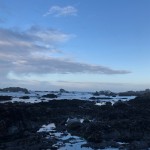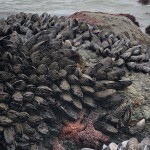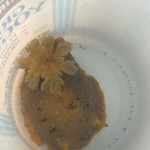One of my favorite ways to enjoy nature and learn more about the world around us is by going tide pooling. This week, I’m going to talk about the basics of tide pooling and safety, and next week will talk about my favorite places and finds around Humboldt County!
For anyone who is unaware, tide pooling is when you and a group of people go out at low tide to find all the wonderful creatures living in rock pools that are normally covered with water. The rocks are wet and are very slippery when covered in algae, so make sure to wear closed toe shoes/boots with good grip. Wearing clothes that you don’t mind getting wet in is also really important!
Before embarking on your tide pooling adventure, it is essential that you check the weather and swell at least an hour before to make sure that the conditions are safe. Sneaker waves are very dangerous and a cause of death among Humboldt County residents each year. Don’t turn your back to the ocean! It is also essential to have a buddy. Not only does it maximize fun, but it is important to have someone with you just in case you injure yourself. Furthermore, you need to have someone watching for sneaker waves, especially if the cute animal you’re looking at has your undivided attention. Pro tip: bring a garbage bag to do a simultaneous beach clean up!!
Some creatures you may find include but are not limited to: sea stars (Pisaster ochraceus and Dermasterias imbricata), sea urchins (Strongylocentrotus purpuratus) , mussels (Mytilus californianus) , sea anemones (Anthopleura xanthogrammica), clingfish, gumboot chiton (Cryptochiton stelleri), crabs of all sorts, sea cucumbers, and my favorite–nudibranchs! My favorite nudibranchs I have found locally are Hermissenda opalescens, Triopha catalinae, and Doris montereyensis. My friend and I even found a large Doris montereyensis at Woodley Island Marina that we named Big Ang (pictured below).
The tide pools around Humboldt County are known to be rich with biodiversity, but have been subject to the harmful effects of climate change and sea star wasting disease. It is important for us as humans to remind ourselves of the impact our actions may have on flora and fauna, especially in the ocean.













